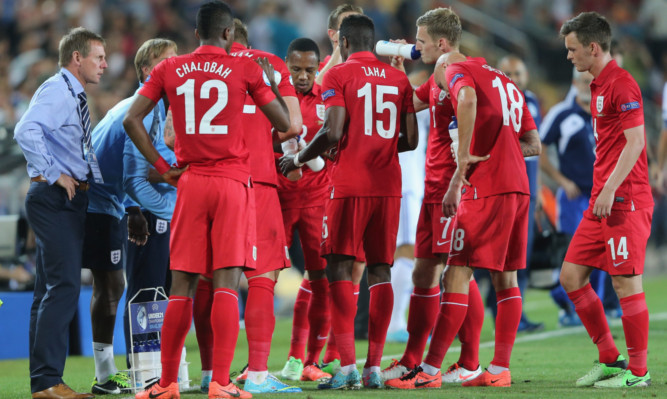
There were simply no redeeming features about the failure of England’s Under-21s at the European Championships and Stuart Pearce’s departure this week seems inevitable.
Clueless, passion-less and tactically inept and they were just the compliments!
As coach, Pearce must shoulder his portion of the blame. They didn’t score from open play, resorted to throwing big centre-halves forward to rescue games, got overrun in midfield and defended poorly.
Like most of the senior team’s coaches, Pearce does a perfectly good job getting his side to tournaments he’s qualified for the last four he just can’t cut it when he gets there.
He’s lost just two of 29 qualifiers, yet failed to win a game at either of the last two championships.
Pearce publicly slated his players at the end and appeared to abdicate responsibility.
“I’m sick to the back teeth of defending people,” he said. “The players should be here answering questions.”
It sounded a lot like a man cleaning up his CV before he goes out job hunting.
But the debate runs much deeper than who’s in charge. There’s a fundamental question about the purpose of having an Under-21 team.
Is it about winning tournaments or about giving players experience that will enable them to step up to the senior team as more complete players?
In a perfect world you’d do both. If forced to choose one, then trophies take second place to education.
There’s a culture with England that once a player has been involved with the seniors, it’s a backwards step to return him to the Under-21s.
Pearce asserted that 17 players qualified to play in Israel were unavailable to him some through injury, but others because they were with Roy Hodgson.
As a result, Phil Jones, Alex Oxlade-Chamberlain, Danny Welbeck and Jack Rodwell went to Brazil instead.
Could they have done both? Well, four of the Norwegian squad played for the senior team in Albania before flying directly to Israel and beating England.
If players think stepping down a level is beneath them, they should consider Chelsea’s Juan Mata.
He was a World Cup winner in 2010 but at the Under-21 tournament a year later. He went straight from winning Euro 2012 to play in Spain’s Olympic team.
Spain, like Brazil and Argentina, believe that junior tournaments create future World Cup winners.
Lionel Messi, Xavi, Andres Iniesta and Neymar all grew up understanding the nuances of tournament football.
England’s players don’t have that knowledge. And it shows.

Enjoy the convenience of having The Sunday Post delivered as a digital ePaper straight to your smartphone, tablet or computer.
Subscribe for only £5.49 a month and enjoy all the benefits of the printed paper as a digital replica.
Subscribe